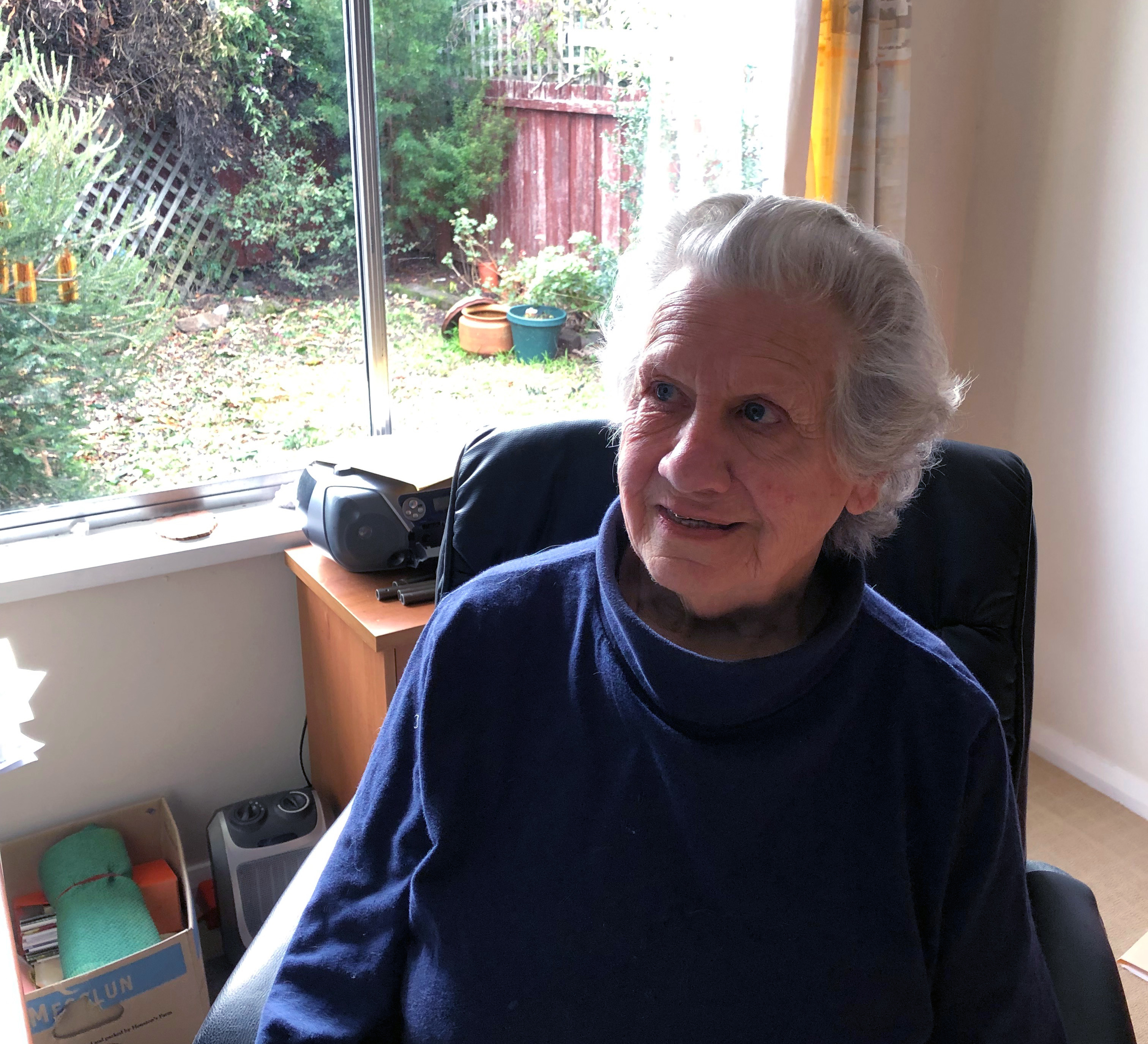
At 89 years of age and with decades of activism behind her, lifetime Greens member Melva Truchanas is still looking ahead to the future and the impact she might be able to make on it for generations to come.
“Activists are not born – they respond to the happenings of their lifetime.”
Terry Tempest Williams, a protector of the Utah Red Rock Country
When it comes to Greens stalwarts, it’s difficult to think of anyone as steeped in the movement as Melva Truchanas.
With a lifetime membership to the Greens, Melva is a dedicated activist and widow of the legendary wilderness photographer Olegas Truchanas.
Born in Melbourne in 1930, Melva moved to Tasmania as a child. There, she spent her childhood building a strong connection to the land through activities like girl guiding and bushwalking.
In her 20s, Melva met and married Olegas Truchanas, a Lithuanian refugee forced to flee his homeland after the war in Europe destroyed his country. Learning about the magnificence of his new country and recording it with his exceptional physical strength and photographic ability, it was with Melva’s support that Olegas’s connection to the land deepened, and her commitment there continues still.
An activist couple
After they married in 1956, Melva and Olegas became aware that the political decision-making had little regard for long-term conservation. Together, the couple worked to protect Tasmania’s precious places from development and destruction.
“When I look back, I find a real yearning to be involved in the land and the environment, to appreciate and make sure other people understood that,” Melva says.

Melva joined with others to form the South-West Committee and the Lake Pedder Action Committee in the mid-1960s – the latter of which sprung from government plans to artificially dam and flood Lake Pedder as a water impoundment for hydroelectric power generation.
“The South-West Committee was working to get Tasmania’s south-west corner much more protected before the Hydro-Electric Commission started to take over Tasmania’s lakes and the water resources for the industrialisation of the state,” Melva says.
The fight to save Lake Pedder from inundation dominated Melva and Olegas’ lives for years – but they were hit with some devastating blows along the way.
In 1967, the Hobart bushfires completely destroyed their home and possessions – including the extensive collection of photographic slides Olegas had amassed over the preceding 17 years, which documented his adventurous walking and canoeing journeys into the far south-west.
As a result, Olegas set out to recapture his life’s work. But in 1972, whilst re-photographing the Gordon River, he tragically drowned in a canoeing accident.
And later that year, the fight to save Lake Pedder was also lost when the Hydro-Electric Commission was given government approval to flood it.
The Green connection
While the pair were continuously involved in environmental activism, it wasn’t until after Olegas died that the Greens were formed.
“Becoming part of the Green movement was a logical progression for me,” Melva says.
“It started with the South West Committee, the destruction of Lake Pedder, the conservation movement, and then the Greens, developing over a period of about 60 years.
“I was already involved quite deeply in conservation with Olegas, particularly with his photography of the south-west of Tasmania, and particularly with the work he did in supporting the big movement to save Lake Pedder from destruction by hydro inundation.”
For Melva, getting involved with the newly formed Greens just made sense.
“Through our involvement in the battle to save Lake Pedder, by default we learnt about the manipulations of government and the political sequences of trying to be heard,” she says.
The experience also gave her an insight into the people in politics who supported environmental conservation in a way that jelled with her own beliefs.
“We had a background knowing who was a supporter, who was a thinker, and who was worrying about the nation and not just the profits,” Melva says.
“And then the Greens popped up and became the right people.”
“They were the ones that, if we had a chance to be of any use on the political scene, then that would be the very logical place to go.”
So how did her initial view of the party pan out in the years that followed?
“The Greens have rarely disappointed me,” Melva says.
“Bob Brown, Christine Milne and now Richard Di Natale are the ones whose future vision and past long-term memories continue to maintain Australia’s integrity where other parties fail – they’ve all got this eye on the quality for the future for Australia.
“I can’t say there’s a unified body of people in any of the other parties who come near them.”
A logical progression
For Melva, the next logical step beyond her activism and political involvement is to think about the impact she might be able to make further into the future.
“I’m thinking of wills and my savings and how money can be equitably distributed,” she says.
That’s why she’s decided to leave a gift to the Greens in her will, automatically becoming a member of the Greens’ bequest program EverGreen.
Melva hopes her gift will continue to drive the movement forward – something she believes is even more urgent now given the current political climate.
“The last election has dismayed me and a large number of the Australian people, I think,” she says.
“I fear that the present government was elected by default rather than by its ability, and I will do whatever I can to make sure that Green and environmental considerations are brought to the fore while astonishingly destructive decisions are being made.
“I fear these decisions are much more in the interests of larger manipulators than they are of the people and the nation itself.”
To learn more about our EverGreen program or leaving a bequest to the Greens, contact our bequest officer at evergreen@greens.org.au.
